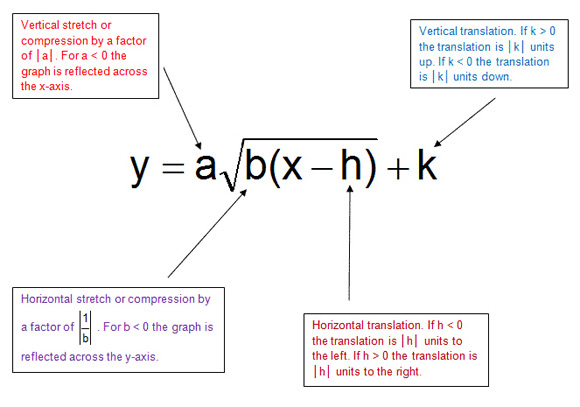Graphing Square Root Functions
You have already learned about the transformations of the quadratic functions when the values of "a", "h", and "k" are changed. These transformations are the same for square root functions, with the addition of a "b" value. Analyze the following diagram to learn more about the transformation of square root functions.

These same rules apply for cube root functions.